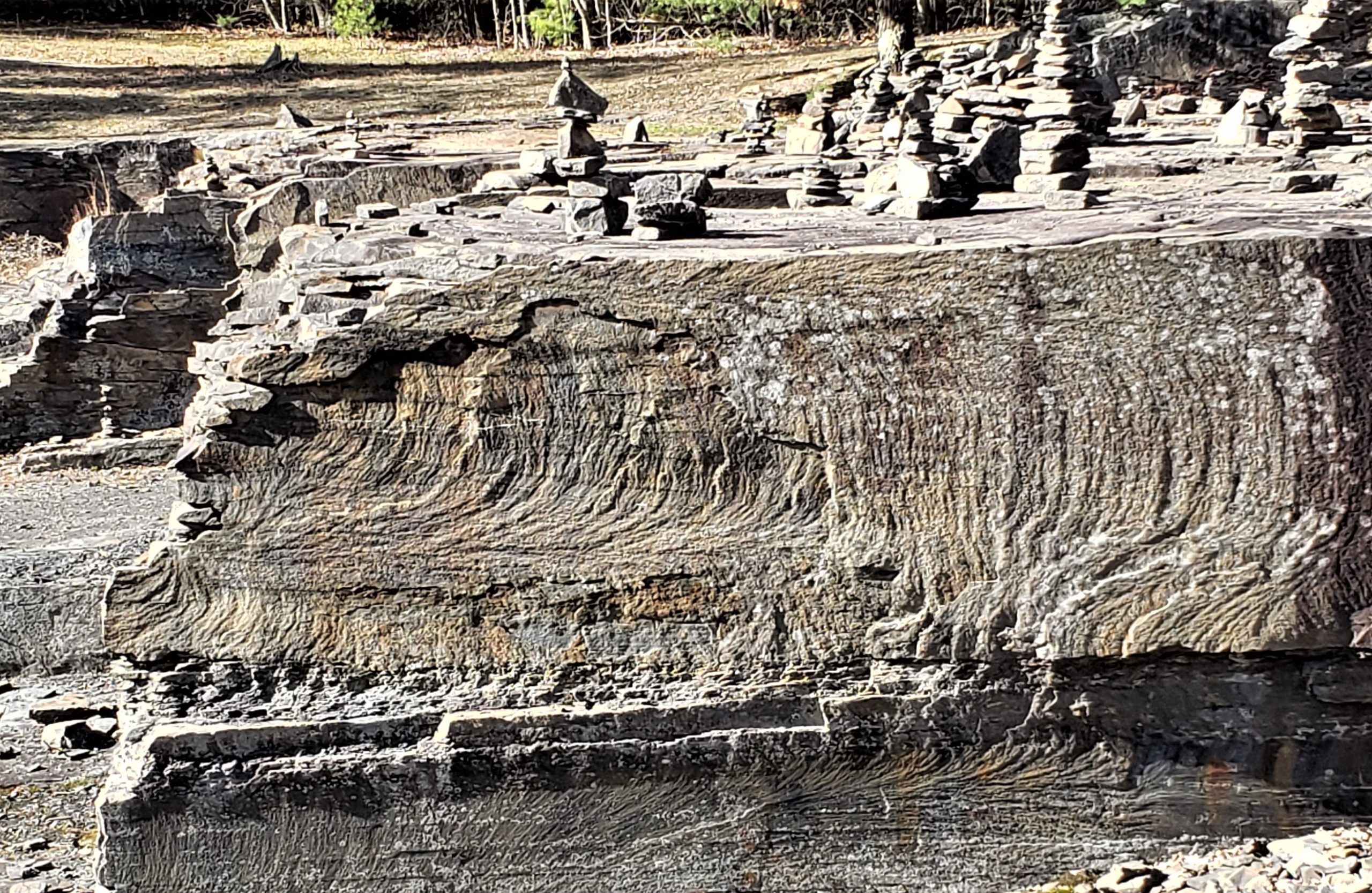THE CATSKILL GEOLOGISTS BY PROFESSORS ROBERT AND JOHANNA TITUS
We try, as often as possible, to show you interesting structures and features that you can go and see for yourself in our regional bedrock. We will do this again in this column, but this week’s effort will definitely be above average. Take a look at our first photo. We are, once again, down in the bottom of Harvey Kite’s Opus 40 quarry. That vertical wall of bluestone is a joint fracture probably exposed by long ago work when this was a functioning commercial quarry. Back then that wall of rock likely had a pile of rock debris banked up against it. We are guessing that Harvey Fite cleaned it up and exposed this surface. All that quarrying broke the rock along a very old joint. We spoke of joints last week. They are vertical fractures in the bedrock that date back often hundreds of millions of years. Those rocks were compressed probably when the African crustal plate collided with North America. That was perhaps about 390 million years ago. Later Africa split from our continent and drifted away, off to the southeast. That’s when all that compression was reduced, and the bedrock expanded and cracked along these joint planes.
Take a good look and you will see a very distinctive feature. It is called a plumose structure. This is a common fracture pattern associated with jointing. You can see prominent and concentric fractures radiating upwards. They produce a rippled appearance to the joint surface. You have to look carefully, but there are more shorter radiating structures below. The effect is to produce something that, as the name implies, resembles a bird’s feather. Take a look at our second photo, courtesy of Wikimedia Commons. Those are two real feathers and like the geology, they are shorter below. The similarity is obvious but strictly coincidental.
What on earth is going on here? Geologists interpret these structures as having formed at the very moment of jointing. Stresses had been building up for long periods of time and then the rock gave way and the jointing occurred. Somewhere along the line we recall hearing that the fracturing radiated through the rock at the speed of sound. We can only guess, but there must have been an ear-splitting cracking sound. In the end, these are just humble fractures, but they have quite a history. We wonder what Harvey Fite knew and thought of them. He cleaned off this exposure. Was that to make it part of his art?
Contact the authors at randjtitus@prodigy.net. Join their facebook page “Tye Catskill Geologist.” Read their blogs at “thecatskillgeologist.com.”

